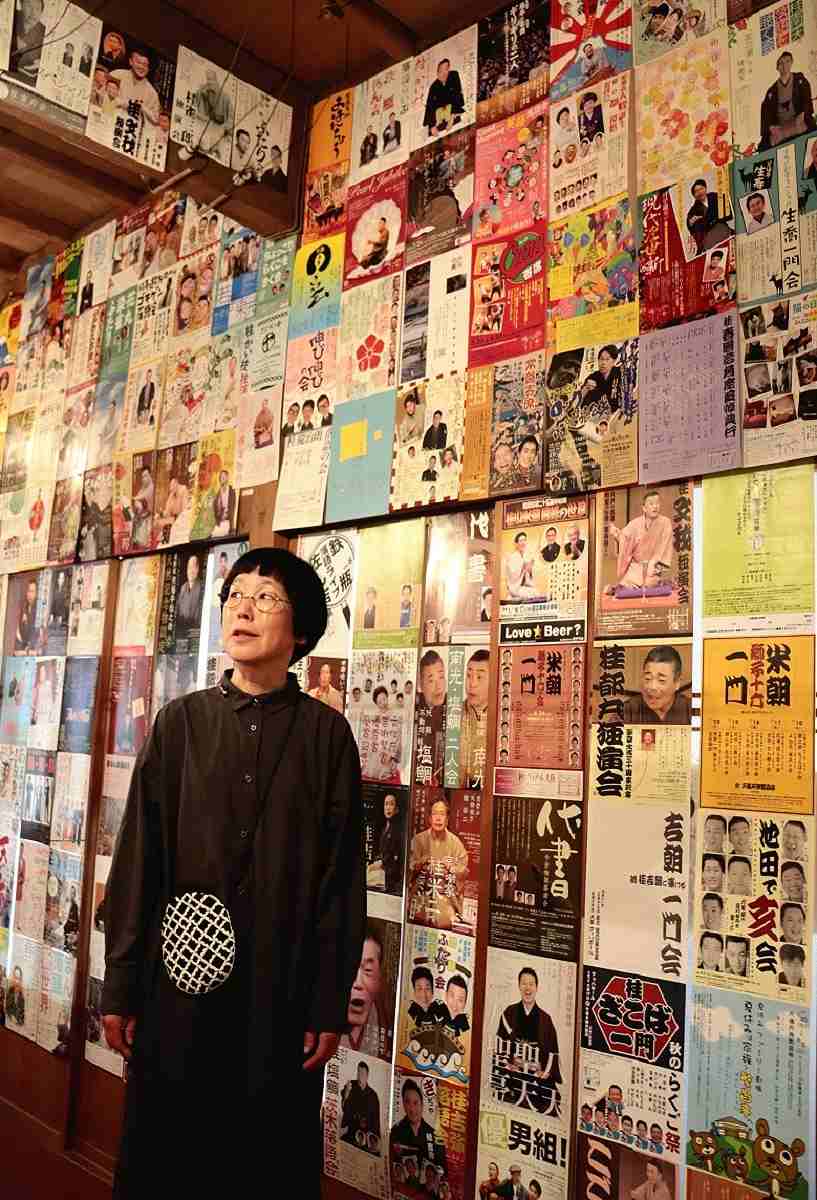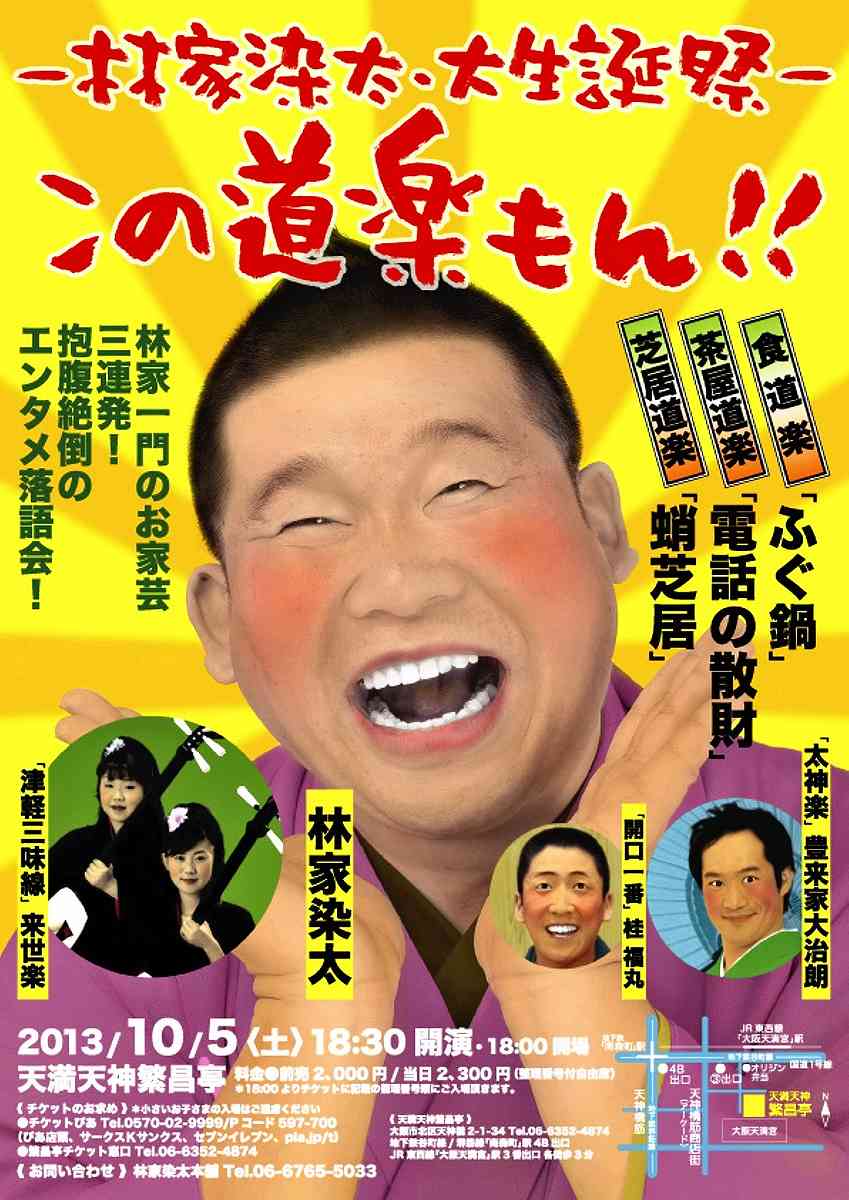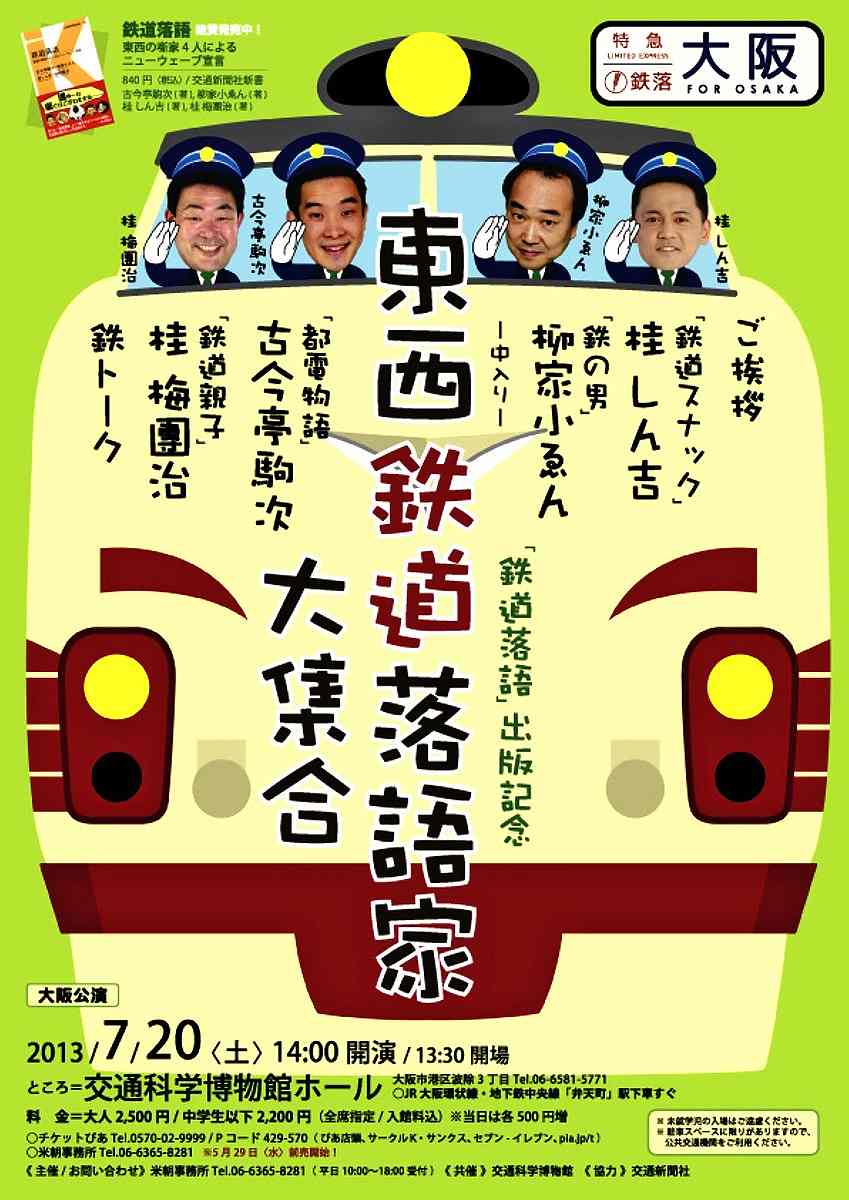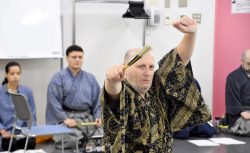
“I didn’t realize I had designed so many flyers,” said Kumiko Toyota, in front of her works in Kita Ward, Osaka.
10:00 JST, July 6, 2023
OSAKA — Kumiko Toyota, a shamisen player who provides backing mainly to performances by rakugo storytellers at yose theaters, has also been supporting the rakugoka in another way — by designing flyers for their performances.
Her first design work more than 20 years ago was well received by rakugo performers. And in the subsequent two decades, Toyota, who lives in Suita, Osaka Prefecture, has designed some 5,000 flyers. She is now an indispensable if unsung supporter of rakugo culture of the Kamigata style, which developed in the Kansai region.
It all started in 2001 when Toyota was working part-time for Beicho Co., a rakugo entertainment company named after renowned rakugoka Katsura Beicho (1925-2015). A member of the company asked her to create a flyer for a screening of a solo performance by Katsura Shijaku (1939-1999).
Toyota, 49, had never studied design, but she gave it a shot, learning from other flyers.
For the flyer’s background, she used a gradation of white and light blue, over which she placed a photo of a gently smiling Shijaku from one of his performances. At that time, rakugo flyers were usually black-and-white and carried only text — no photos. Toyota’s flyer brought surprise and novelty.
In 2003, Toyota joined the world of shamisen players who perform at yose theaters. These players are usually called “ohayashi-san” in Japanese. While serving as a shamisen player at Dorakutei theater in Osaka and other venues, she made flyers upon request. She incorporated yose script, the font that has traditionally been used by such theaters, as she had learned it during her activities at a rakugo club at her university. She has combined the script with photos and illustrations according to the storytelling style employed or the features of an event. “As I usually listen to rakugo in the wings, it’s easy for me to come up with designs,” Toyota said. Gradually, she began to receive more orders for flyers from rakugoka.
Sometimes, she adds hair or fills in missing teeth on a rakugoka, according to the wishes of the performer. Trains are added for rakugoka who are railroad enthusiasts, while stars are sprinkled on for a rakugoka who likes the Takarazuka Revue Company.
On some flyers, she overlays the title of the performance on the face of a rakugoka, leaving out the word rakugo entirely. She has also made many flyers for the events of popular rakugoka such as Katsura Zakoba, Katsura Nanko and Shofukutei Tsurube.
Mie Hidaka, editor-in-chief of Yosepi, a free magazine on Kamigata entertainment, said, “Toyota’s flyers capture the personalities of rakugoka. They are so gorgeous that they make people want to go to rakugo events.” Katsura Niyo, who has been asking Toyota to make flyers for her rakugo events for nearly nine years, said, “Toyota is a reliable person as she can hammer out the perfect design when I just give a suggestion, such as ‘festive’ or ‘energetic.’”
“I’d like to continue to support the rakugo world and help raise its popularity,” Toyota said.

A flyer inspired by old Japanese movie posters

A flyer showing four rakugo storytellers who have been made to look like train drivers
"Culture" POPULAR ARTICLE
-

Van Cleef & Arpels Dazzles with Art Deco Artisanry at Tokyo Exhibit
-

Disney’s ‘Twisted-Wonderland’ Animated Series Puts Villains in Spotlight: New Show Features School Inspired by Classic Disney Films
-

Ayumi Hamasaki’s Shanghai Concert Canceled Day Before Schedule as Part of Beijing Backlash
-

‘The World Masterpiece Theater Series’ Celebrates 50 Years; Animator Looks Back on Creating Anime Classics
-

Popularity of Piggy Banks Across Time and Place Seen at Bank’s Museum of Money Boxes in Hyogo Pref.
JN ACCESS RANKING
-

Tokyo Economic Security Forum to Hold Inaugural Meeting Amid Tense Global Environment
-

Keidanren Chairman Yoshinobu Tsutsui Visits Kashiwazaki-Kariwa Nuclear Power Plant; Inspects New Emergency Safety System
-

Imports of Rare Earths from China Facing Delays, May Be Caused by Deterioration of Japan-China Relations
-

University of Tokyo Professor Discusses Japanese Economic Security in Interview Ahead of Forum
-

Japan Pulls out of Vietnam Nuclear Project, Complicating Hanoi’s Power Plans
























